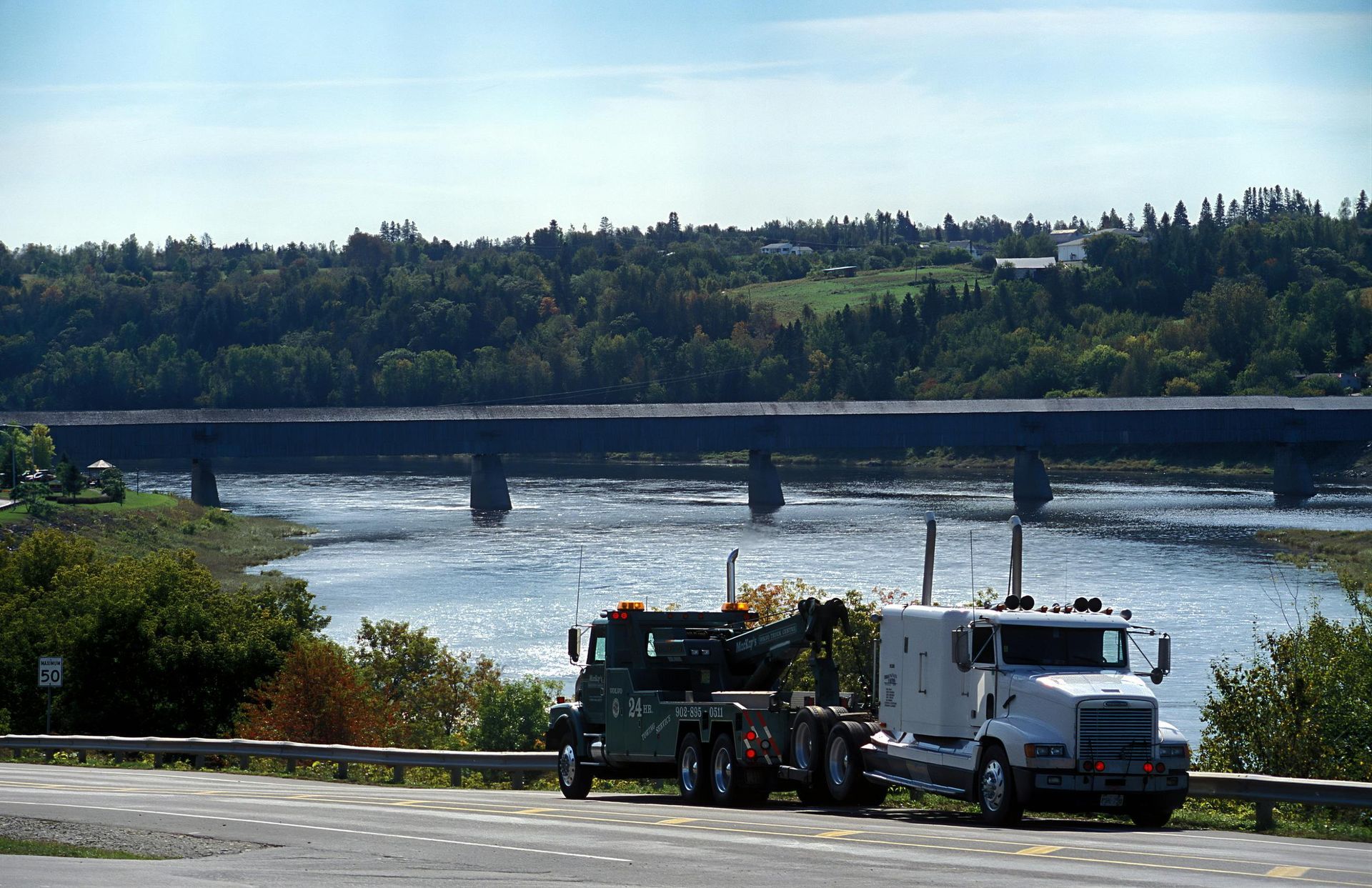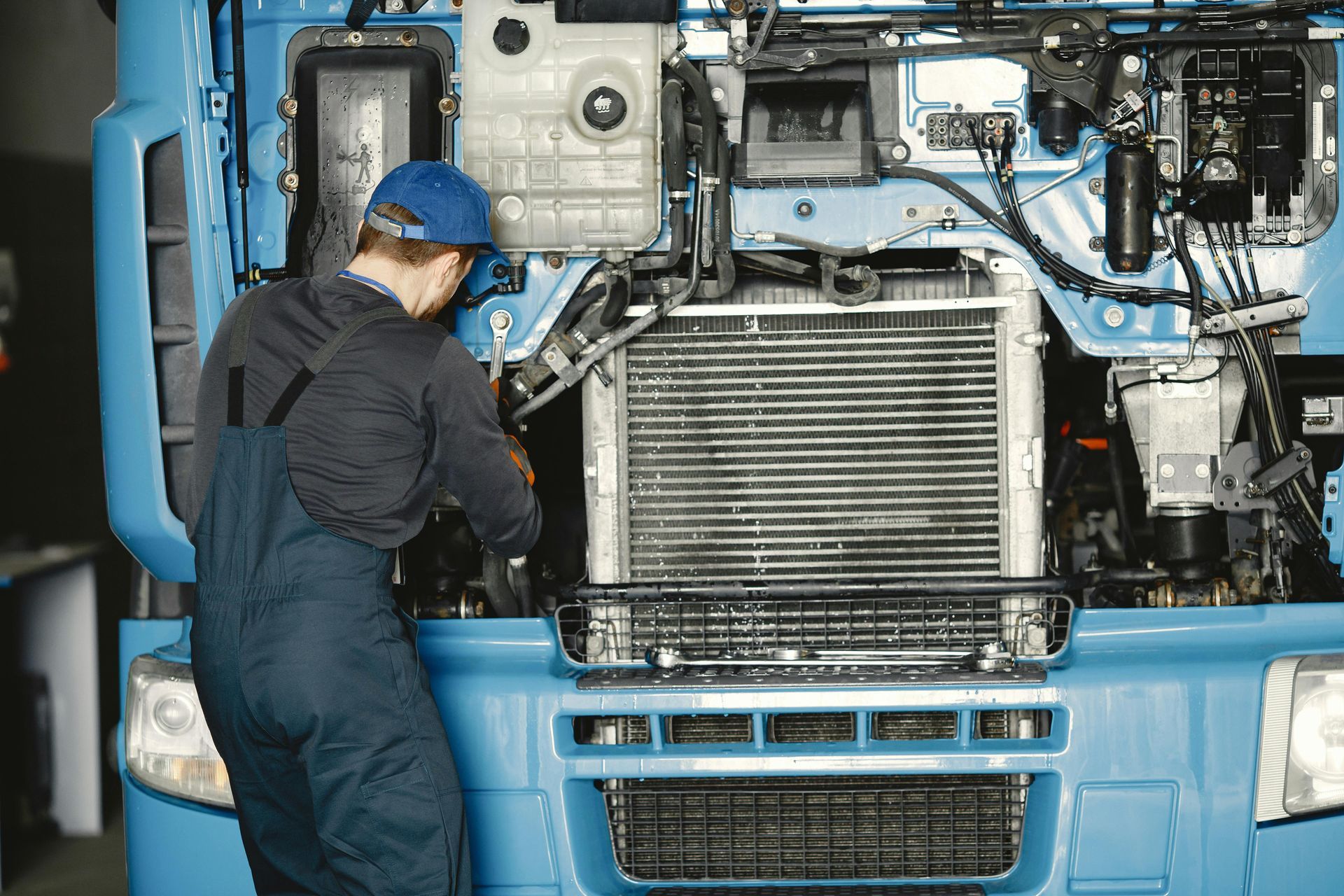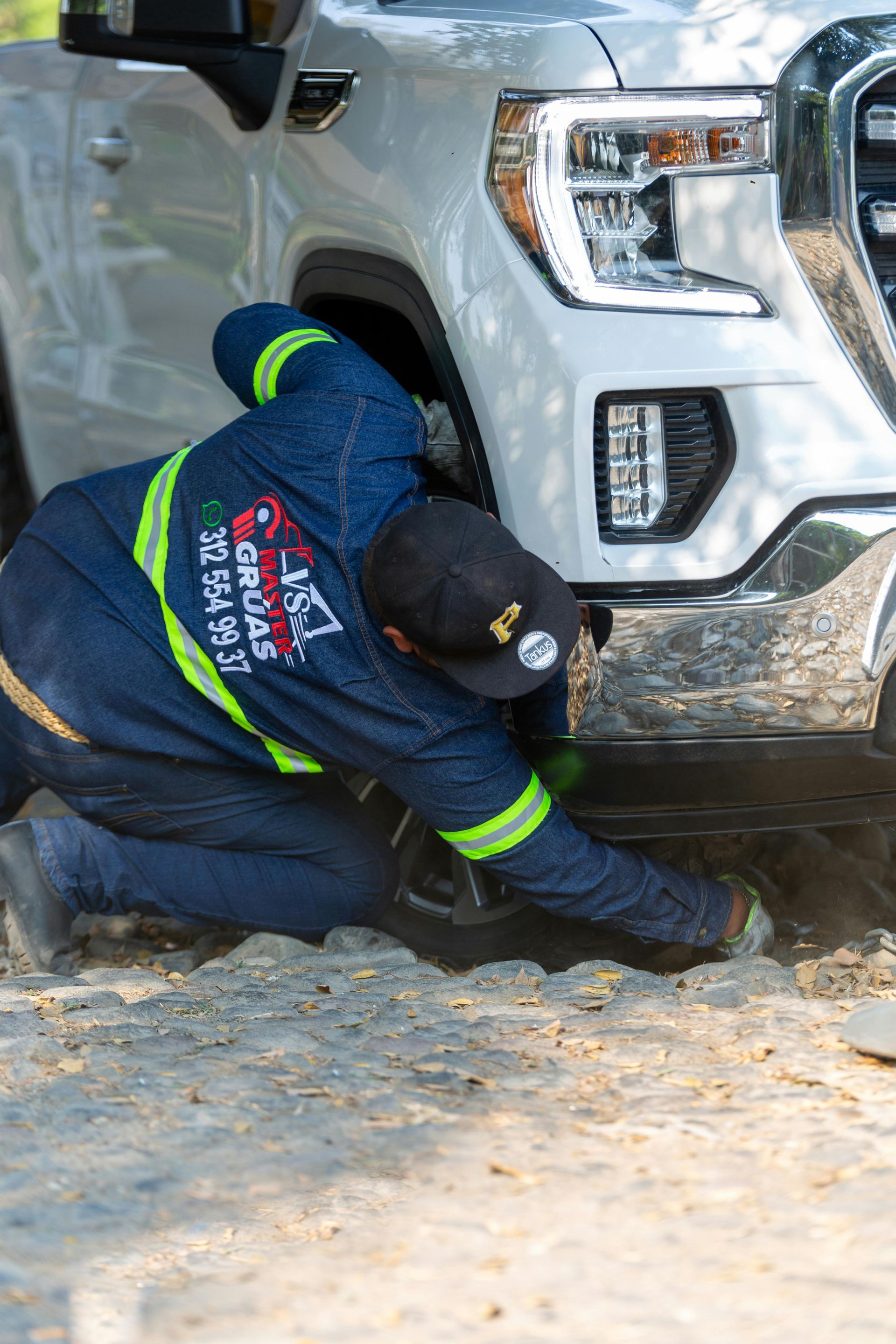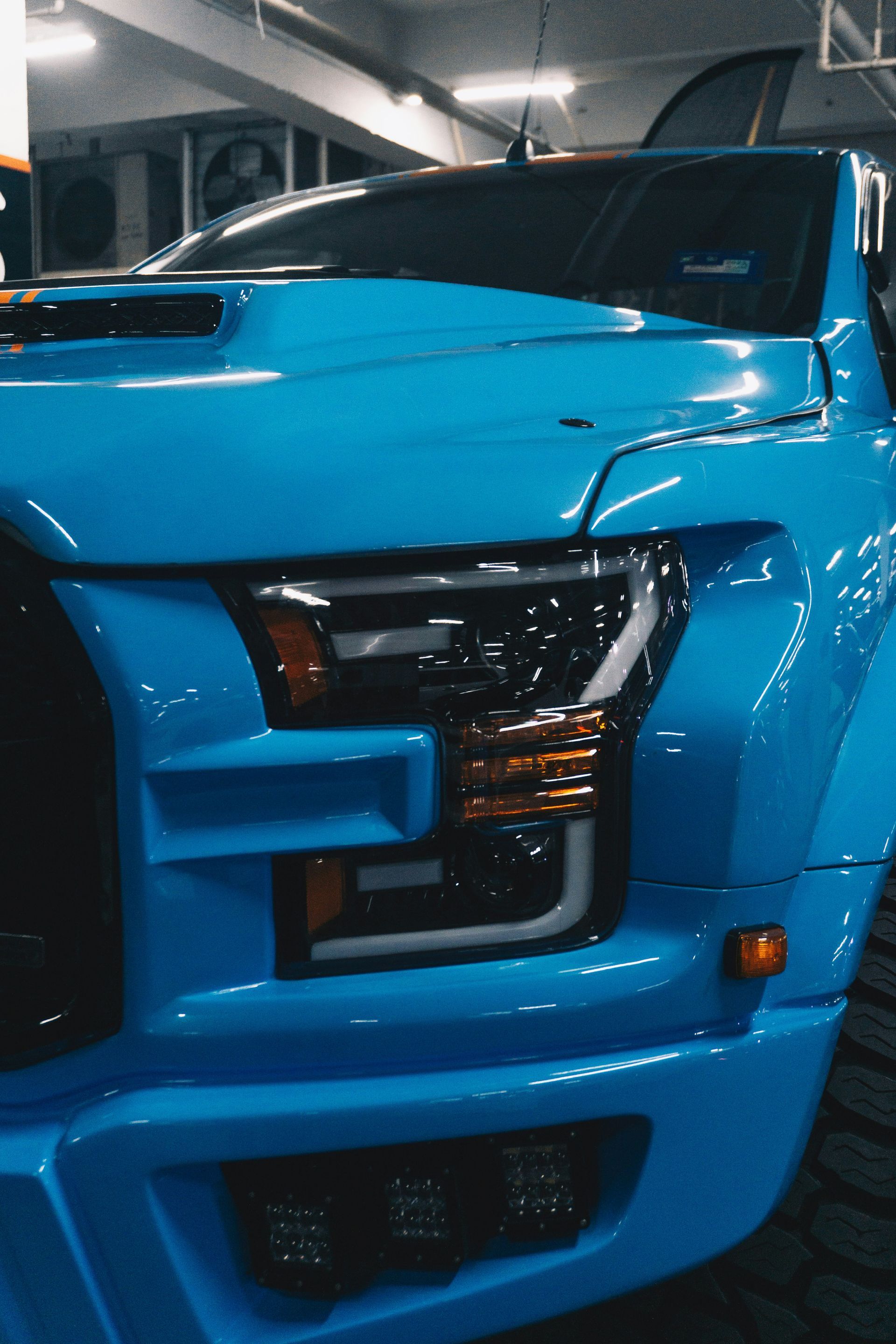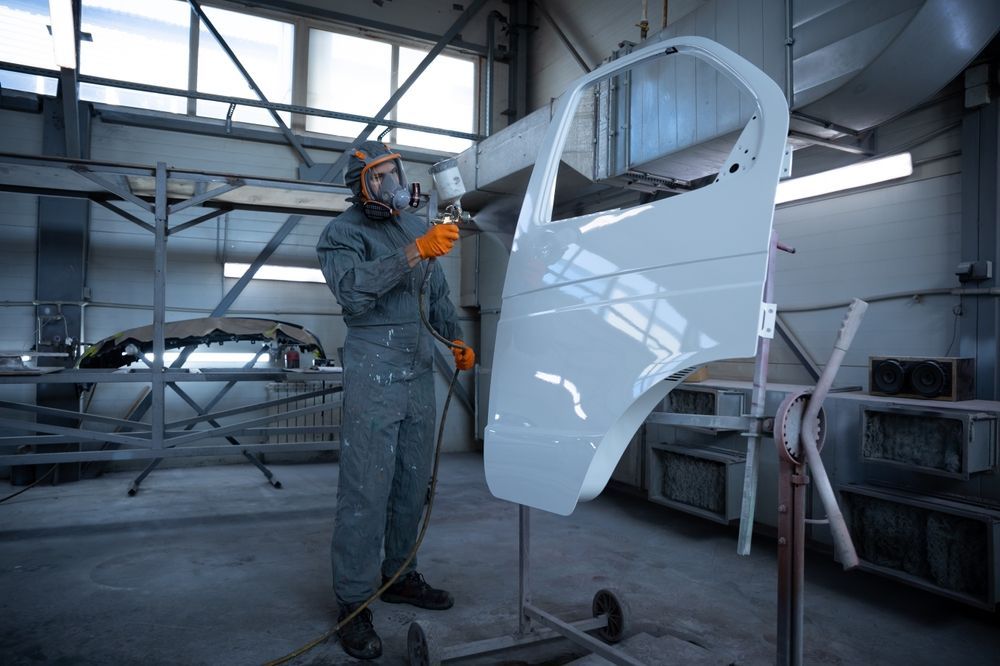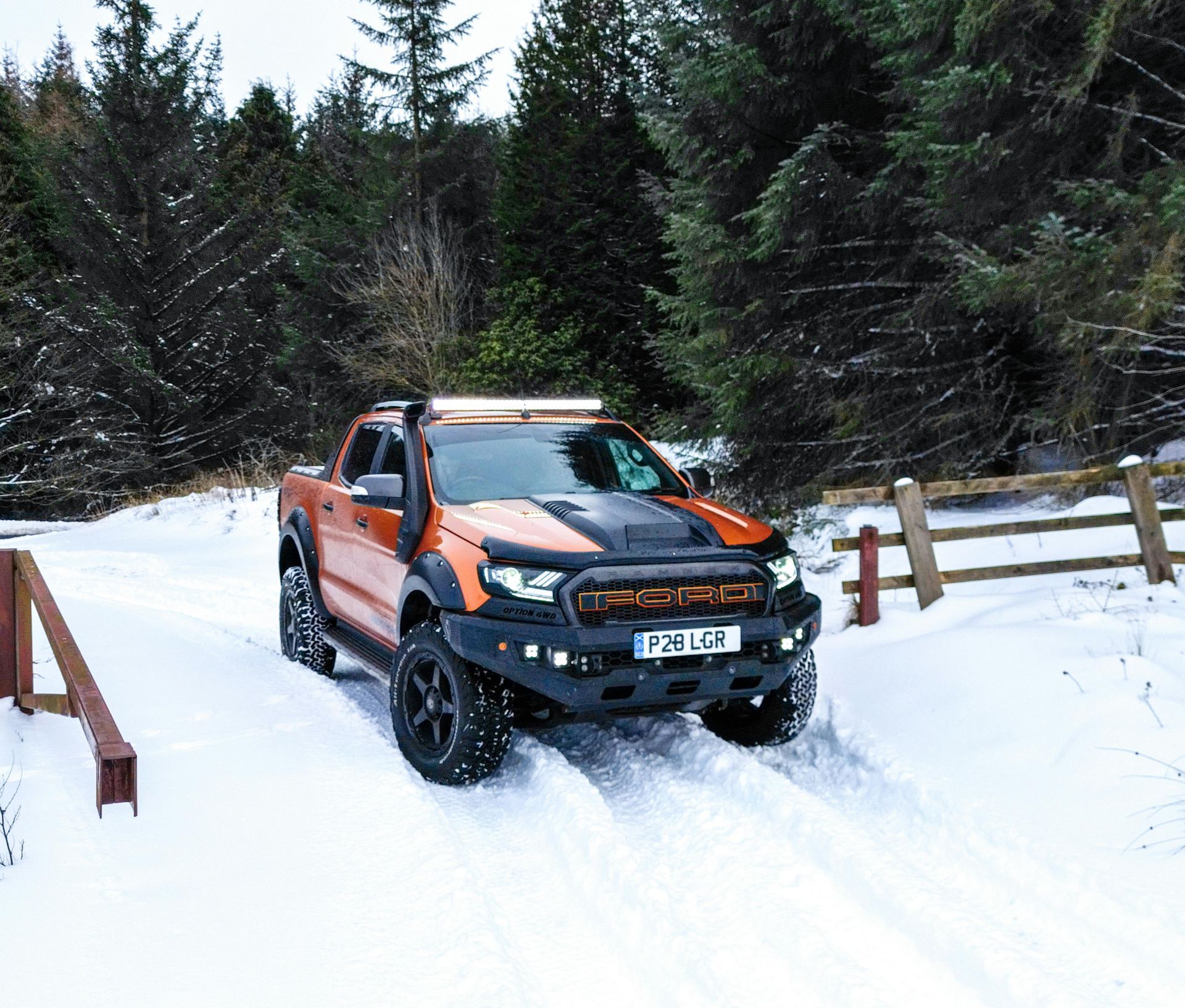Guide to Professional Fleet Vehicle Painting for Your Business
As a fleet manager or trucking company owner, you’re constantly juggling logistics, maintenance schedules, and bottom lines. With so much to manage, the appearance of your vehicles might seem like a secondary concern. But what if we told you that the paint on your trucks from your Class A tractor-trailers to your nimble sprinter vans is one of the most powerful and underutilized assets you have?
Your fleet is a mobile billboard, seen by thousands of potential customers every single day. A chipped, faded, or inconsistent paint job can send the wrong message about your company's professionalism and attention to detail.
On the other hand, a sharp, uniform, and professionally painted fleet builds immediate trust and brand recognition.
This guide is for you. We'll dive into everything you need to know about fleet vehicle painting, from the surprising return on investment to the nitty-gritty of the painting process and choosing the right materials. Let's get your fleet looking as good as the service you provide.

The ROI of a Fresh Coat: Benefits of Professional Fleet Painting
Investing in professional painting for your commercial vehicles goes far beyond simple aesthetics. It’s a strategic decision that pays dividends in brand reputation, asset longevity, and even employee morale.
1. Unforgettable Brand Recognition and Consistency
Your trucks are out on the road, representing your company in every city and on every highway. A consistent, professional look ensures that whether someone sees one of your box trucks making a local delivery or a full-sized rig on a cross-country haul, they recognize your brand instantly. This constant visibility is a form of advertising that works for you 24/7.
Statistic: According to a study by 3M, a single intra-city truck with graphics can generate up to 16 million visual impressions in a year. A professional paint job is the foundation of that high-impact mobile branding.
2. Superior Asset Protection
The daily grind is tough on your vehicles. Rain, snow, road salt, and harsh UV rays all take a toll on a truck’s exterior. A high-quality paint job is your first line of defense. It acts as a protective barrier against:
- Rust and Corrosion: Sealing the metal from moisture and corrosive elements.
- UV Damage: Preventing the underlying materials from degrading and colors from fading.
- Chemicals and Abrasions: Guarding against minor scratches, grime, and road debris.
By protecting the vehicle's body, professional fleet vehicle painting extends its operational life and reduces the need for costly body repairs down the line.
3. Increased Resale Value
When it's time to cycle out older vehicles, their condition is paramount. A truck with a well-maintained, rust-free body and a clean paint job will always command a higher resale or trade-in value than one that looks worn and neglected. Think of it as an investment that you’ll get back when you upgrade your fleet.
“Your fleet is a moving billboard. The quality of its appearance speaks volumes about the quality of your service.”
4. Boosted Employee Pride and Performance
Believe it or not, the appearance of a truck can impact the person behind the wheel. When drivers are given a clean, sharp-looking vehicle, it fosters a sense of pride and professionalism. They are more likely to take better care of the equipment, drive more responsibly, and represent your company in a positive light during interactions with customers.
From Prep to Polish: A Look at the Fleet Painting Process
Demystifying the fleet vehicle painting process helps you understand where the value lies and what to look for in a quality service provider. A professional job isn't just about spraying on a new color; it's a meticulous, multi-step process.
- Step 1: Consultation and Inspection
The process begins with a detailed discussion of your goals. This includes color matching to your brand guidelines, decal placement, and the type of finish you want. A thorough inspection of each vehicle is performed to identify any pre-existing damage, such as dents, rust spots, or deep scratches that need to be addressed.
- Step 2: The Critical Surface Preparation
Ask any professional painter, and they'll tell you that the final result is 90% preparation. This is the most labor-intensive but crucial stage. It includes: - Washing and Degreasing: Removing all dirt, oil, and road grime.
- Sanding: Scuffing the old surface to create a texture the new primer and paint can grip onto.
- Body Work: Repairing any dents, dings, or rust damage to create a perfectly smooth surface.
- Masking: Carefully taping off and covering all areas that will not be painted, such as windows, tires, lights, and chrome trim.
- Step 3: Priming
Once the surface is prepped, a high-quality primer is applied. The primer serves two key functions: it promotes adhesion between the surface and the topcoat, and it provides an additional layer of protection against corrosion.
- Step 4: Painting and Curing
The vehicle is moved into a controlled, dust-free paint booth. Here, professional technicians apply multiple layers of your chosen paint (the base coat) followed by a durable clear coat. The clear coat is what provides the glossy finish and the primary protection against UV rays and minor scratches. The vehicle is then cured, often using specialized heat lamps to harden the paint for maximum durability.
- Step 5: Finishing and Decal Application
After the paint has fully cured, the masking is removed. This is when any branded decals, logos, or lettering are expertly applied. A final inspection and detailing ensure the vehicle looks flawless and is ready to rejoin your fleet.
Not All Paints Are Created Equal: Selecting the Best Coating for Your Trucks
The type of paint used on your fleet has a major impact on its durability, appearance, and long-term cost. While a good paint shop can guide you, understanding the basics helps you make an informed choice. Here’s a look at common options for commercial vehicles.

For most modern fleets, a
urethane base coat/clear coat system offers the best balance of a stunning, high-gloss finish and the rugged durability needed to withstand the demands of the road.
Frequently Asked Questions About Fleet Vehicle Painting
How much does it cost to paint a fleet vehicle?
The cost varies widely based on the vehicle's size (e.g., a sprinter van vs. a 53-foot trailer), its current condition (amount of prep work needed), the type of paint used, and the complexity of the job (e.g., multiple colors or complex graphics). It's best to get a custom quote for your specific needs.
How long does the fleet painting process take?
Typically, painting a single commercial vehicle can take anywhere from 3 to 7 days. This includes time for extensive prep work, multiple paint coats, and proper curing time. A reputable shop will give you a clear timeline and may offer to work on vehicles in batches to minimize downtime for your fleet.
Is painting better than a vinyl wrap for a fleet?
It depends on your goals. Painting is generally more durable, longer-lasting (often 7+ years), and more resistant to peeling and fading. It’s ideal for long-term branding. Vinyl wraps are excellent for complex, photo-realistic graphics and can be removed, which is great for leased vehicles or temporary campaigns. However, wraps are more susceptible to damage from scrapes and can have a shorter lifespan (typically 3-5 years).
Ready to Transform Your Fleet?
Your fleet is more than just a collection of vehicles; it's the face of your company. Professional fleet vehicle painting is a powerful investment that strengthens your brand, protects your assets, and drives your business forward. By choosing the right partner and the right process, you ensure your trucks make a positive and lasting impression wherever they go.
Are you ready to see how a professional paint job can elevate your fleet?
Contact us today at (814) 484-5774 for a free, no-obligation consultation and quote! Let our experts help you design a look that turns heads and builds trust.
